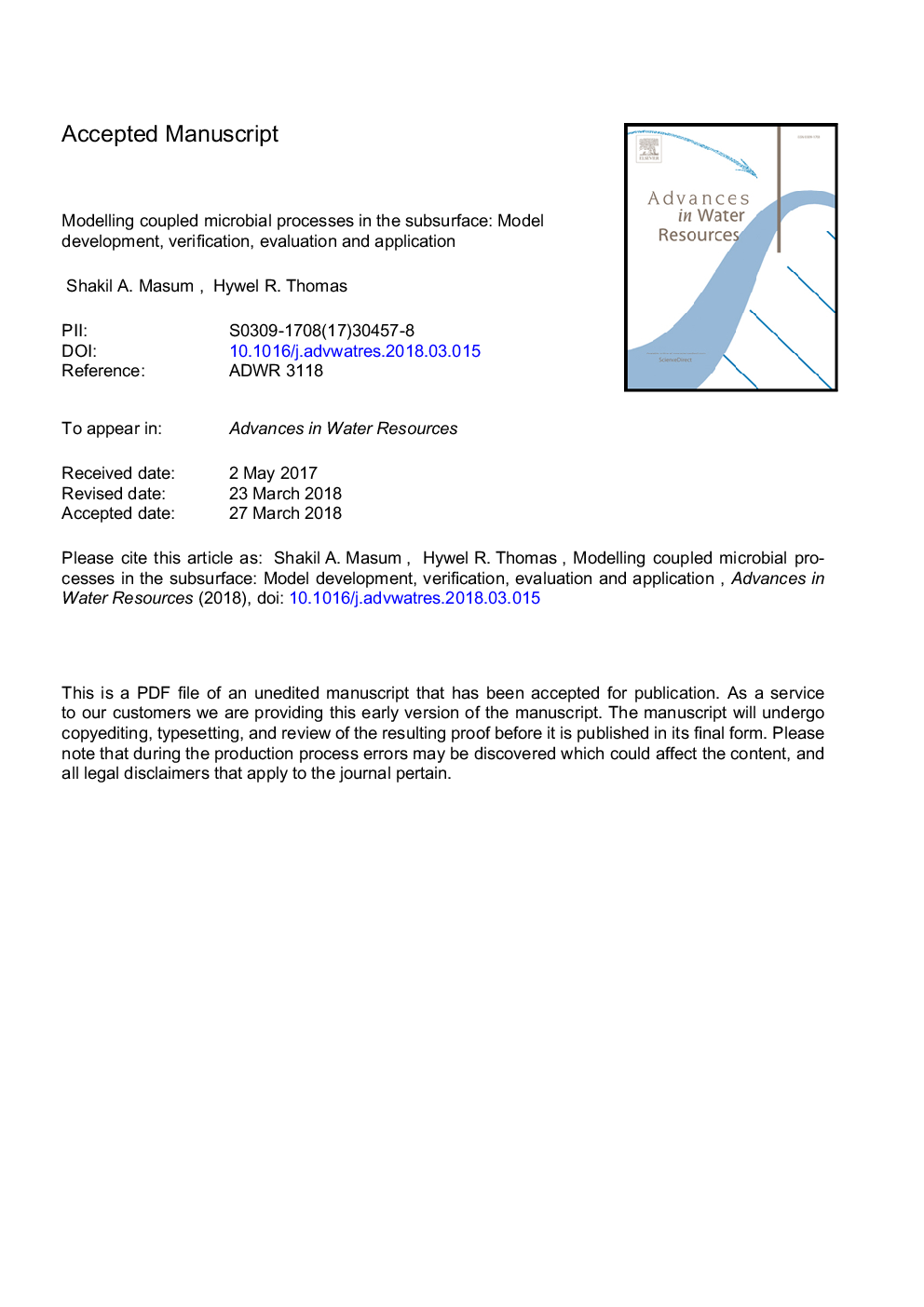| Article ID | Journal | Published Year | Pages | File Type |
|---|---|---|---|---|
| 8883284 | Advances in Water Resources | 2018 | 44 Pages |
Abstract
To study subsurface microbial processes, a coupled model which has been developed within a Thermal-Hydraulic-Chemical-Mechanical (THCM) framework is presented. The work presented here, focuses on microbial transport, growth and decay mechanisms under the influence of multiphase flow and bio-geochemical reactions. In this paper, theoretical formulations and numerical implementations of the microbial model are presented. The model has been verified and also evaluated against relevant experimental results. Simulated results show that the microbial processes have been accurately implemented and their impacts on porous media properties can be predicted either qualitatively or quantitatively or both. The model has been applied to investigate biofilm growth in a sandstone core that is subjected to a two-phase flow and variable pH conditions. The results indicate that biofilm growth (if not limited by substrates) in a multiphase system largely depends on the hydraulic properties of the medium. When the change in porewater pH which occurred due to dissolution of carbon dioxide gas is considered, growth processes are affected. For the given parameter regime, it has been shown that the net biofilm growth is favoured by higher pH; whilst the processes are considerably retarded at lower pH values. The capabilities of the model to predict microbial respiration in a fully coupled multiphase flow condition and microbial fermentation leading to production of a gas phase are also demonstrated.
Related Topics
Physical Sciences and Engineering
Earth and Planetary Sciences
Earth-Surface Processes
Authors
Shakil A. Masum, Hywel R. Thomas,
